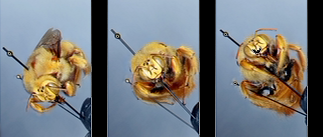
Bee Library
An online resource connecting images, specimen records, and natural history information about bees.
Dataset: All Collections
Taxa: Andrena prunorum (Andrena shasta, Andrena sinaloa, Andrena prunorum sinaloa, Andrena arizonensis, Andrena kincaidii, Andrena pascoensis, Andrena vernoni, Andrena prunorum gillettei, Andrena prunorum mariformis, Andrena prunorum pauperatula), Andrena prunorum prunorum, Andrena prunorum subsp. prunoru... (show all)
Search Criteria: United States; California; Santa Barbara; Lat: 33.94651 - 34.08792 Long: -119.93463 - -119.46517; includes cultivated/captive occurrences
1
Page 1, records 1-12 of 12
1
Page 1, records 1-12 of 12
Google Map
Google Maps is a web mapping service provided by Google that features a map that users can pan (by dragging the mouse) and zoom (by using the mouse wheel). Collection points are displayed as colored markers that when clicked on, displays the full information for that collection. When multiple species are queried (separated by semi-colons), different colored markers denote each individual species.



